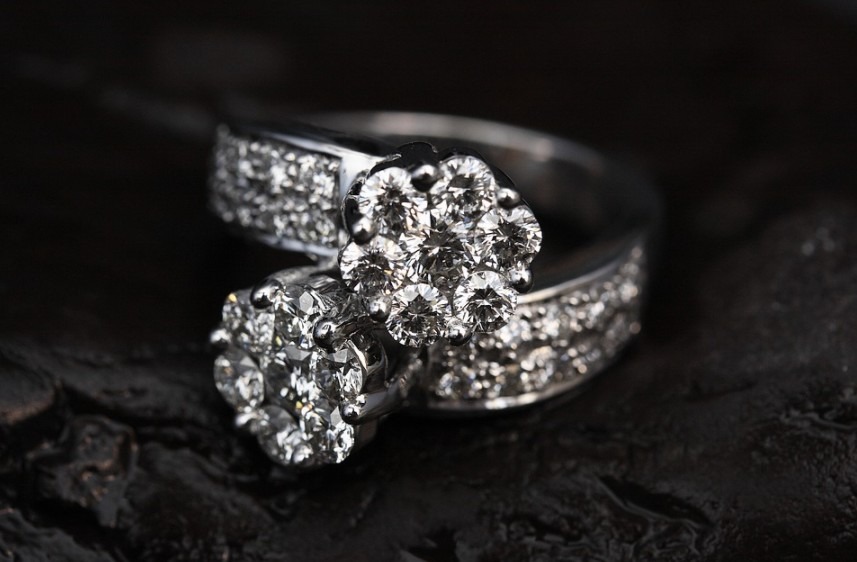The brilliance of the diamond, especially its look from the top view, is also affected by its length and width. Its length and width ratio of the diamond indicates its proportionate length and width. The diamond’s L/W also matters because it gives an idea of how big or small the stone appears and defining its shape.
Diamond rings are the most expensive kinds of rings because the process itself is very intricate, and the stone itself is the hardest to be cut among all stones. Diamonds have varying appearance and shape based on their ratios.
Furthermore, the not exact ratio may make a princess cut diamond appear rectangular, or a heart very thin or extra-thick. Whatever shape it has, may it be an Asscher, Cushion, Heart, Marquise, Oval, or Radiant, a diamond has a specific length and width ratio that is followed to make it appear more brilliant. Therefore, it is necessary to gauge all the shapes except round since it measures the same throughout.
Importance of Diamond Measurements
A diamond with ideal proportions of width and length takes in and reflects the light perfectly, which also causes its brilliance. A cut that is too shallow or too deep may not reflect some light. A poor diamond proportion thus looks dull and lifeless.
However, a more brilliant diamond means more expensive because of the intricate process of the cutting.
How to Calculate L/W Ratio?
A diamond length to width ratio calculator will help you achieve the diamond’s beauty that you wish to have. It can be determined through a simple formula.
To calculate the L/W ratio of the diamond, divide the length of the diamond by its width.
Example:
If you have a pear-shaped diamond with a length of 7.5 mm and a 5.0 mm width, it will have a 1.50: 1 length-to-width ratio.
Length to Width Ratio = Length of the Diamond/Width of the Diamond
The diamond’s shape is a matter of personal taste, but certain set standards describe the best L/W ratio. Have a look at different L/W ratio variations for various shapes.
Diamond proportion is the ratio and size of the diamond’s depth, width, and table. Like table and depth percentage, the exact proportions play a considerable role in the beauty of a diamond. Diamond proportion is an element of Diamond Cut and is critical to a stone’s brilliance and value.
Diamond Table
The table percentage can be derived by dividing the table width (top surface area) by the diameter. For example, if the table facet is 3mm wide and the diameter is 5mm, the table percentage is 60%. Too low table percentage causes light to be trapped inside the diamond and leaks out the sides of the diamond (instead of reflecting back through the table). Contrarily, too high table percentage, light doesn’t reflect off the diamond’s crown angles and facets, making the diamond look dull.
Diamond Width
Width is the measurement from one end of the girdle (the diameter at its widest point) to the girdle’s opposite end.
Using a diamond length to width ratio calculator, width is mainly used to determine the L/W ratio, which denotes how proportionate is the diamond to its intended shape. If a diamond, for example, has a length of 6mm and a width of 4mm, the length to width ratio is 1.5.
Diamond Depth
Divide the depth of the diamond (its height) by its width to get the depth percentage.
Example: If a diamond has a 3mm depth and 4mm width, its depth percentage is 75%.
Diamonds with a lower depth percentage usually appear larger because of the increased width and often creates a dark appearance as it also doesn’t reflect light. However, diamonds with too high of a depth percentage lose light out the diamond’s bottom, making it appear dull.
Precise and ideal measurement for the table, depth, and width is crucial as all these impacts how well a diamond refracts and reflects light. That’s finding a diamond with ideal cut proportions in each area is essential!
How is the diamond proportion calculated?
You can find a lot of diamond length to width ratio calculators. Knowing the dimensions of the table size, crown height, and pavilion depth concerning the diamond’s diameter will help you know your diamond proportion.
Each calculation describes the angles and ratios of the diamond’s precise cut. These aspects are universally measured in millimeters (mm) and/or percentages.
Factors affecting the diamond proportion
Here are the 10 main factors that affect diamond proportion:
- Table size: diamond’s table’s length and width (top surface area)
- Star length: Length of the angled facets adjacent to the table
- Girdle thickness: Girdle’s height (the belt that divides the crown from the pavilion)
- Lower girdle length: Lower girdle’s width—from the culet to where the facet connects to the girdle
- Culet: Culet’s size (bottom tip of a diamond)
- Total depth: Height of a diamond from culet to table
- Pavilion depth: Height from the culet to bottom of the girdle
- Crown height: Height from the top of the girdle to the table
- Pavilion angle: Angle of the pavilion from the bottom of the girdle to the edge of a diamond pavilion
- Crown angle: Angle of the crown from the top of the girdle to the edge of a diamond crown
Ideal diamond proportions
When you have the best diamond proportions, a perfect reflection and refraction of light happen. And some diamond experts recommend the following proportions:
Best Diamond Proportions for Round Brilliant Diamonds
Depth Percentage 59 to 62.6%
Table Percentage 54 to 57%
Girdle Thickness Thin to Slightly Thick
Culet None to Pointed
Length to Width Ratio 1.0 to 1.03
Sticking with these ideal diamond proportions, you’ll have a stunning diamond that captures and reflects light.


